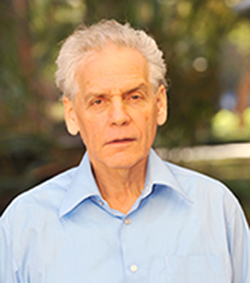
Prof. Reshef Tenne
A report on a fundamentally new and unprecedented molecular closed-cage nanostructure, produced by immensely concentrated sunlight was published recently by a team combining researchers in Beersheba, Rehovot and Russia. Ben-Gurion University of the Negev Profs. Jeffrey Gordon and Daniel Feuermann, Prof. Reshef Tenne’s group at the Weizmann Institute of Science, and Dr. Andrey Enyashin at the Ural Federal University explained their work in a recent issue of one of the foremost journals in nanotechnology, ACS Nano.
A nanostructure is a structure that has dimensions of only a few nanometers. Closed-cage molecular structures of nanometer dimensions have been realized for years – starting with pure carbon, followed by the discovery of a panorama of inorganic compounds by Tenne. The theoretical basis for why these remarkable molecular enclosures form followed. Invariably, they were found to exhibit startling and unanticipated electronic, mechanical and chemical properties.
But closed-cage nanostructures assembled from the alternate layering of different chemical compounds that, individually, would not succeed, but together, as a “misfit” superstructure, do indeed succeed, had neither been proposed nor synthesized previously. In this case, the two compounds were lead sulfide and tin sulfide.
The experimental success story followed, thanks to an advanced solar furnace designed and built by Gordon and Feuermann at their lab at BGU’s Sde Boker campus’s Jacob Blaustein Institutes for Desert Research. Highly concentrated solar radiation proved to be the key element in creating a unique reactor conducive to the synthesis of these singular misfit nanostructures. The reactor conditions include continuous temperatures approaching 3,000 degrees Celsius and relatively large irradiated areas, creating an extensive ultra-hot annealing environment (using heat treatment to change a material’s and strong gradients in the reaction region).
Their misfit nanostructures could exhibit interesting qualities for absorption of visible light, which could spawn applications in photocatalysis and photodetection.
Their groundbreaking findings augur well for future studies in which a rich spectrum of such misfit layered nanostructures could be identified and synthesized; these are now being planned in by Tenne, Gordon and Feuermann.
